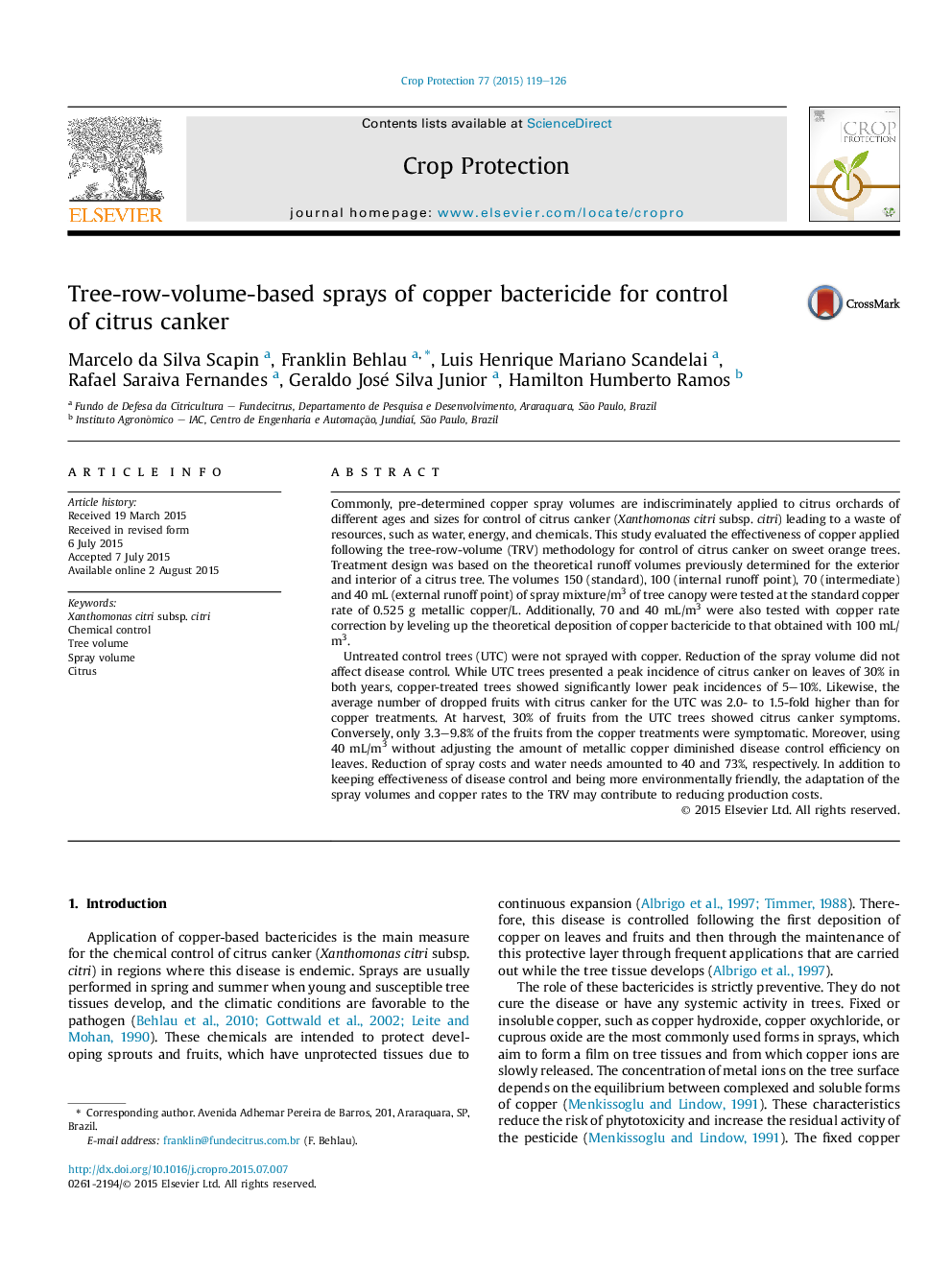| Article ID | Journal | Published Year | Pages | File Type |
|---|---|---|---|---|
| 4505648 | Crop Protection | 2015 | 8 Pages |
•The tree-row-volume (TRV) methodology is suitable for control of citrus canker with copper.•Reduction of the spray volume does not affect disease control.•Copper rate adjustments may be needed when using reduced spray volumes.•Copper spray volume and rate can be as low as 40 mL and 36.8 mg metallic copper/m3 of tree per spray, respectively.•TRV-based sprays reduce water and chemical usage and increase operational efficiency.
Commonly, pre-determined copper spray volumes are indiscriminately applied to citrus orchards of different ages and sizes for control of citrus canker (Xanthomonas citri subsp. citri) leading to a waste of resources, such as water, energy, and chemicals. This study evaluated the effectiveness of copper applied following the tree-row-volume (TRV) methodology for control of citrus canker on sweet orange trees. Treatment design was based on the theoretical runoff volumes previously determined for the exterior and interior of a citrus tree. The volumes 150 (standard), 100 (internal runoff point), 70 (intermediate) and 40 mL (external runoff point) of spray mixture/m3 of tree canopy were tested at the standard copper rate of 0.525 g metallic copper/L. Additionally, 70 and 40 mL/m3 were also tested with copper rate correction by leveling up the theoretical deposition of copper bactericide to that obtained with 100 mL/m3.Untreated control trees (UTC) were not sprayed with copper. Reduction of the spray volume did not affect disease control. While UTC trees presented a peak incidence of citrus canker on leaves of 30% in both years, copper-treated trees showed significantly lower peak incidences of 5–10%. Likewise, the average number of dropped fruits with citrus canker for the UTC was 2.0- to 1.5-fold higher than for copper treatments. At harvest, 30% of fruits from the UTC trees showed citrus canker symptoms. Conversely, only 3.3–9.8% of the fruits from the copper treatments were symptomatic. Moreover, using 40 mL/m3 without adjusting the amount of metallic copper diminished disease control efficiency on leaves. Reduction of spray costs and water needs amounted to 40 and 73%, respectively. In addition to keeping effectiveness of disease control and being more environmentally friendly, the adaptation of the spray volumes and copper rates to the TRV may contribute to reducing production costs.
